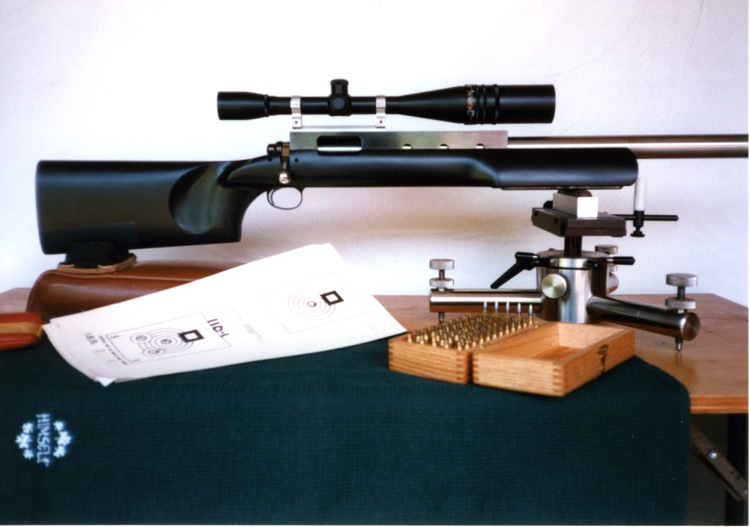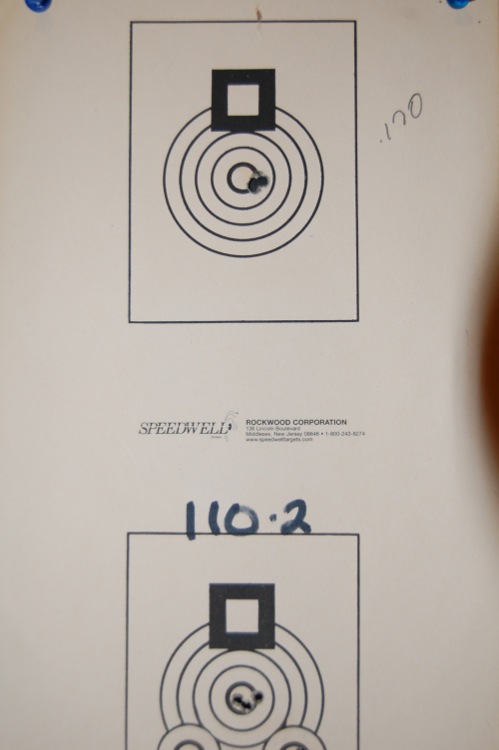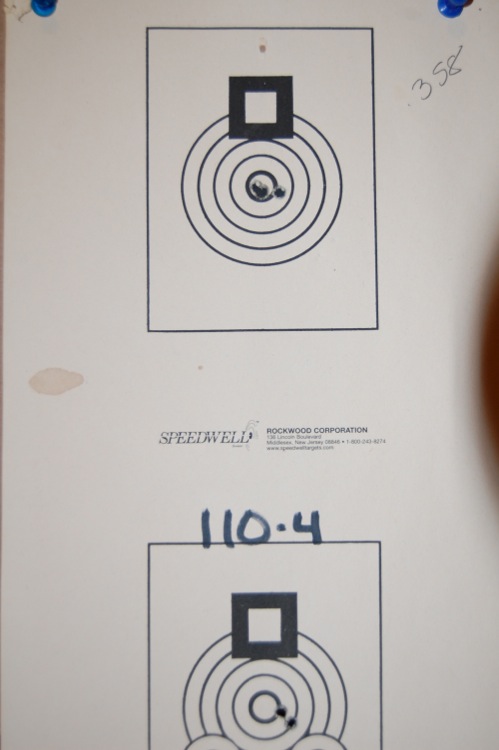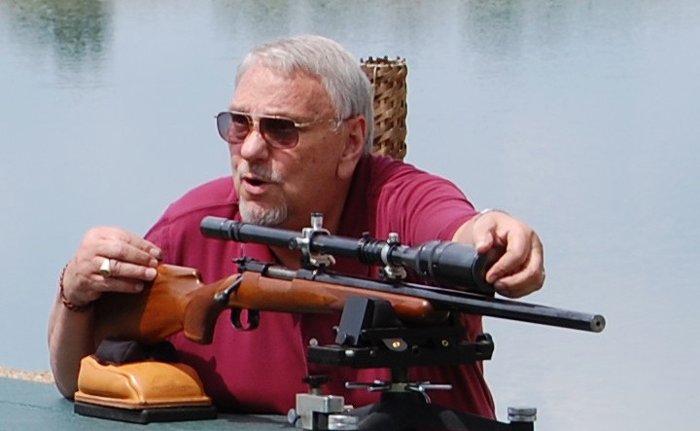I grew up in a rural area outside Saginaw, Michigan. My family owned a few acres of land with a small garden and a big lawn and some pine forest. My chores consisted of helping keep the garden and lawn cared for and left me plenty of time to wander the woods, hunt small game in season and fish in the rivers and ponds. We played softball and football in our front lawn in warm weather and basketball in the neighbor’s barn in winter. It was kind of a Huck Finn childhood and instilled in me a deep love and respect for the woods and the creatures that lived therein. From an early age, I was most interested in guns and hunting.
My first gun was a Daisy Red Ryder BB gun. I did a lot of informal target shooting with that gun and, eventually, thinking I could do better, I made and added a simple peep sight. I then decided that it needed a custom stock – got a chunk of walnut and whittled out my version of a fine stock. Alas, the stock I made will never be placed in the Museum of Modern Art. Still, I was the only ten-year old kid in the neighborhood with a custom BB gun. The peep sight seemed to work and I spent more time shooting at targets, now with better results.
I started small game hunting at age twelve and my arsenal expanded to the BB gun, a cheap 22 rimfire rifle and a single-shot twelve-gauge shotgun my father had purchased for the princely sum of five dollars sometime in the 1920’s. The old shotgun is still with me, hanging on the wall here in my office.
After college I immediately started shooting NRA indoor four position small-bore rifle on the Saginaw Gun Club rifle team. My funds were very limited but I managed to buy a new Model 52 Winchester target rifle and a Unertl 10X 1 inch target scope. A few years later it was traded in on an Anschutz free rifle and a Unertl 18X 1-1/2 inch target model.
At that time good ammo was very cheap. As a member of the Saginaw National Guard rifle team I even received and shot many, many bricks of free 22 practice ammo. I worked very hard with the Anschutz and, after a gazillion rounds of ammo and hours spent practicing, in March of 1969, I was rewarded with a small-bore Master classification from the NRA.
Many guns, mostly target rifles and custom hunting rifles, have come and gone since those long-ago days. In this Culture Corner series I will feature a few of my favorites – some which I still have, and some which have moved on to new owners…
Fatso
I found this rifle at the NBRSA Nationals that was held at Kelbley’s Range in 2001. Checking the ads that are always on the wall in the big loading barn I noticed a ‘For Sale sign for an old Heavy Bench gun for a very reasonable price. The owner was shooting it that day and I watched him. He shot some very small ten-shot groups with a gun that was severely outdated. In a match where nearly everybody was shooting rail guns, this relic that had to be at least 40 years old was clearly holding its own.
When he got done shooting I asked him why he was selling a rifle that shot like that. His reply… he was tired of carrying that monster around, saying his shoulder would hurt for two weeks after he got home from the match. He also said that, if I bought it, I would be needing a new barrel fairly soon.
The rifle was based on a 700 Remington action, converted to single shot and encased in a huge steel sleeve. The fiberglass stock was solid and therefore, very heavy. The stock clearly needed some work to make it more attractive but all the parts were there and, based on the shooting I had seen, it was clearly very, very accurate.
For some reason I have always been enamored with these huge relics from long-ago matches. Do I have masochistic tendencies that I am unaware of? I dunno… But, I had always wanted a rifle like this, the price was right and I couldn’t resist. It came home to live with us.
The writer has a tendency to name things he likes. For example, I have an old sports car named ‘George’. I had to carry this heavy mutha of a gun very little before its name irrevocably became ‘Fatso’. This was in the fall and I would have very little opportunity to shoot it before spring. It was time to do all the things I thought the gun needed. I called my gunsmith, Dwight Scott and asked him to get me a new 14 twist Douglas barrel, to chamber it for my favorite benchrest cartridge (the 22 PPC .100 in. short) and to install it.
When Dwight got the gun, I think he must have liked it as much as I did. He not only did the barrel work but he also spent a couple of days going through all the metal work, just making sure that everything fitted perfectly and that it was timed properly and that the action worked as well as possible.
Dwight charged me a very reasonable price for all the work he did and sent me home admonishing me to make sure it got a good paint job when I got the stock work done. He said that this was a special gun and that it deserved it.
At that time I had been stock making for over thirty years but had only worked in wood on hunting rifle stocks. This would be a new experience. I went to the local auto parts store and bought enough fiberglass kit to do the job.
I spent a lot of time that winter filling in holes, getting lines straight and, generally, making the stock as well-proportioned and attractive as I could. When the weather finally got good enough to shoot I was done but for the paint. This was a problem… I had an itchy trigger finger, there would soon be matches to shoot and there was no time to get a pro the do a paint job.
I glued the action back in the stock and went to Walmart and got a spray can of flat black primer. I squirted the stock with a few thin coats and let it dry. Now I had a new problem… The rifle looked much better but the primer showed every fingerprint… not good. Back to Walmart. This time I bought a can of matt finish clear coat. I cleaned the fingerprints off the stock and gave it a couple more thin coats of the primer. Then I finished with a few coats of the matt finish clear coat. This worked great – no more fingerprints.
I had prepped a sixty-count box of brass in my spare time during the winter. I had, also, adapted the special rest top that had been made for this gun to one of my front rest bases and I was finally ready to shoot.
This would be the part that was easy and fun. I have a 50 and 100 yard range on my property, just outside my office door. One nice day in early spring I sat my equipment on the bench and fired all sixty pieces of the new brass.
I’m not fussy when I fireform brass for the first time. The case shortening process, pushing the shoulder back, has a tendency to make the case necks cockeyed, inducing run-out between the case neck and the body and the group-size can be a tad depressing. For the first firing only I use left over powder and bullets and cram the bullets hard into the lands. My only goals are to establish headspace and to straighten the case and I have learned to not worry about the groups I am shooting. The second firing of the brass will always give much better results. For what it’s worth, the brass takes three firings to be as straight as it will ever get.
I use the second firing of new brass for load work-up. Since over the years I had developed a load that seemed to work very well with the 22 PPC .100 in. Short, I was, now, mostly concerned with seating depth. My normal load for this cartridge uses Scottish-made 322, Federal or CCI match primers and Bart’s 52 gr. 22 bullets that I moly coat myself. I always start seating the bullets to a full jam. I rarely end up with the cartridge being more than 0.005in. shorter than the jam length when I am finished. This load works very well most of the time up here in the cool Northwoods.
The second firing established that which I already suspected – 48 clicks on my Jones powder measure with the Bart’s moly bullets seated into a hard jam worked wonderfully. (This is 26.1 to 26.2 grains of the Scot 322 and gives me 3490 fps.) The rifle was a joy to shoot and it kept making tiny little holes in my targets.
The writer firmly believes in heavy rests, both front and back, if one wants to shoot well off a bench. I had mounted the special top made for this gun atop a Gary Hayes front rest, beautifully made of 316 stainless steel in London, Ontario by the Canadian artist. This rest weighs over thirty pounds and is complimented by a fat rear bag that I got from Russ Haydon and which I filled with heavy sand. Although I have never weighed it, combined with the big rifle, the entire set-up must weigh around a hundred pounds. Properly placed on a concrete bench, this outfit really defines rock-solid steady.
There are only a few matches each year for Unlimited Class rifles. In this class it’s fairly normal to have a great gun and no matches in which to shoot. The first match in which I did get to shoot Fatso was held at our local club. At that time I was the match director and had received a call from one of our shooters – the Nationals were coming. Since we had a scheduled group match, could we include an Unlimited class? A few of our Michigan competitors wanted a practice match before the Nationals. I happily agreed with the stipulation that we shoot five-shot Unlimited only. That way we could shoot right along with the other competitors.

Match day came and I lugged all the heavy stuff required to shoot Fatso out to the range. I think that anyone who participates in sports knows that, in any lifetime, there will be a few magic days. This first match in which I shot Fatso was one of my days. It was warm and sunny with just a light breeze coming from 5:30, my favorite condition on that range. All day the wind stayed steady enough to allow me to pick my way through the seven-minute periods and to shoot only in the 5:30 condition. I simply had to be patient enough to do so.
My first group that day was a .092in. followed by a .170in. and, then, a quite wonderful .063in. On the fourth group disaster struck… I missed a slight wind-switch with my second shot and there was paper between the first two bullet holes. I cursed vilely and silently and forced myself to calm down. My wind condition returned and allowed me to carefully shoot three more through the first hole. The group would be measured at .358in., a number that did not make me happy. Without the flyer, the four-shot group was around .090in.




Whilst waiting to shoot the last target I had a serious talk with myself. I was still in a position, given a good last group, to win the Unlimited match and to beat the rail guns, something I wanted to do very badly. I was shooting a rifle that was accurate beyond my experience. We had conditions that I could handle, a fairly rare occurrence for me. All I had to do was to concentrate and to get off five good shots…
When it came time to shoot, helped by a benevolent breeze, I did all of the above and my final group was a .126in. The aggregate calculated to just over .160in. I had defeated the rail guns with my old relic and won the class. For what it’s worth, I couldn’t stop myself and went home and calculated the 24 shot aggregate without the flyer. It came to .108in.

At that time the IBS world record for 100 yard. five-shot Unlimited was .174in. However, our matches were unregistered and there would be no world record.
I am including pictures of all five targets just as they have hung in my office wall for the last eleven years.
I remember thinking at that time that the world record for five-shot Unlimited should be lower given the equipment we have nowdays. I think the major reason it wasn’t lower is that five-shot Unlimited matches are very rare. This is from memory but I think the record has now been lowered to something around .125in. and I think it was done by Bart Sauter, maker of the Bart’s Bullets which have set many records in the past few years.
I got to shoot the gun in competition again a few weeks later at the NBRSA Eastern Regional Championships held at The Holton Rod and Gun Club in Holton, MI. All the best shooters from this part of the country attend and I would be competing against the rail guns again.
When the 100 yard match was over, I was quite happy. I had taken third place in the aggregate and had the second best group of the day. I have shot at Holton a lot over the past years and that range usually defeats me. The next day, at the 200 yard match, things returned to normal. My results were dismal and best forgotten.
For most of the time since then Fatso has sat here in my office on its rests. As I got older it became more of a problem to carry all the equipment around to matches. I did enjoy having it here to look at as I worked. I liked the way the stock had come out. Considering its huge size, the proportions seemed just right. Over the years I kept it dusted (It was too big to fit in the gun cabinet) and just felt good having it and knowing what it would do.
A day came when I needed a new car. Preferring to pay cash, I had to raise some money and some things had to go, Fatso included. I ended up selling the gun to a nice gentleman who lives in the Mississippi delta along the great river. We have become friends over the last few years and I really think he appreciates the old gun much as I did. It’s nice when things you care about go to a really good home.
I have been a serious gun collector and target shooter for over fifty years. Many a fine rifle has come and gone. Of all the guns I have owned I probably regret selling this ancient and outdated relic the most. It’s no longer sitting in its rests here in my office and I miss it.
Dick Wright
Clare, MI USA
Staff Writer


